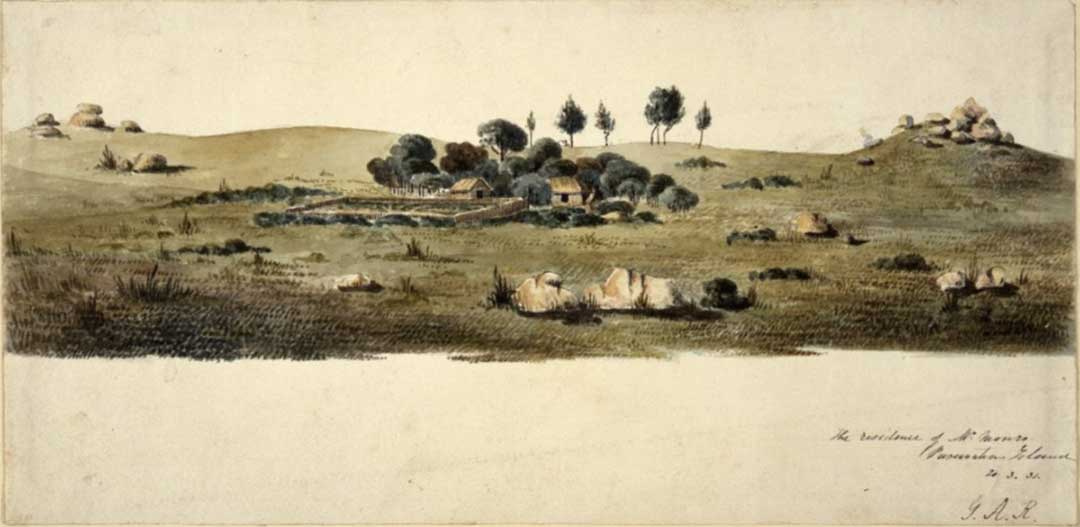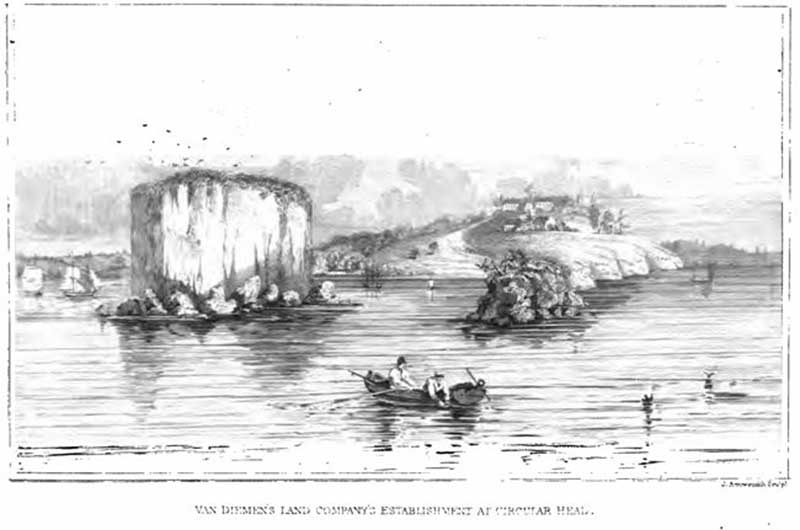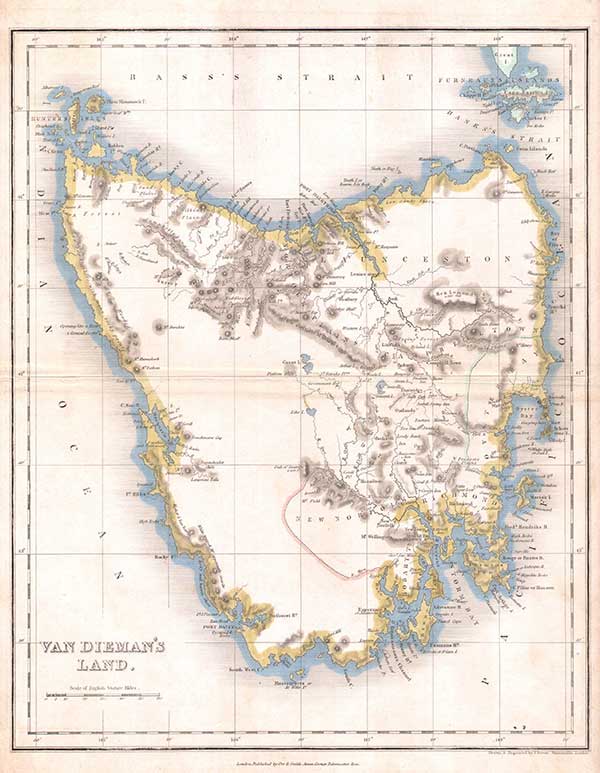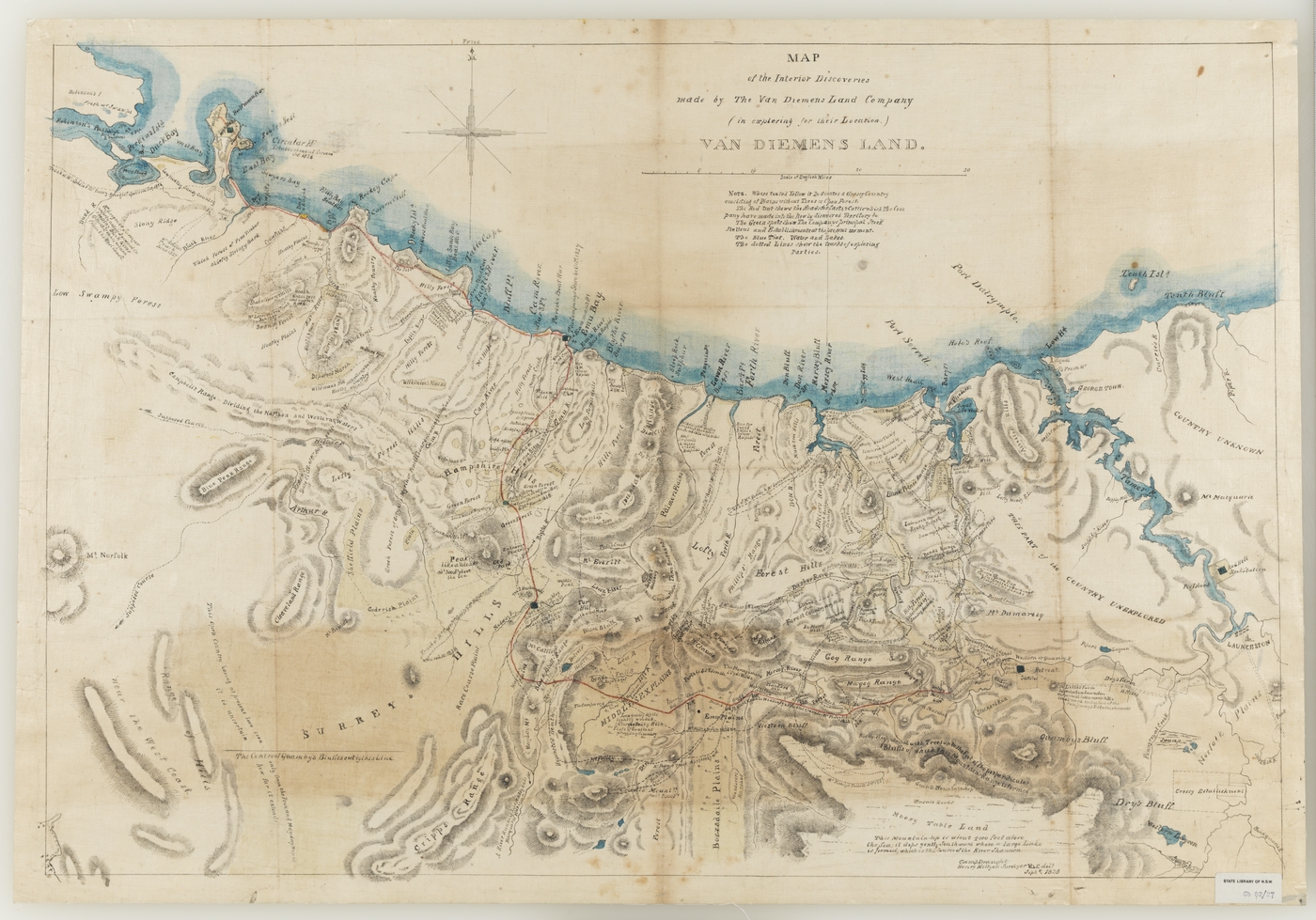Three Counties
The Early History of Tasmania's North West
When Abel Tasman became the first European to set eyes on Tasmania in 1642, Aborigines had lived in harmony with the island for 35,000 years. Tasman named it Van Demens Land to honour the East Indies Governor-General, Anthonie Van Deimen, who had sent him to discover gold and silver. Nearly all the early explorers had some contact with the Aborigines but their visits were brief until the arrival of the French expedition of d’Entrecasteaux (1792) and Baudin (1802) who made a proper scientific study of the people and their customs.
British and American seal hunters had begun visiting the Bass Strait islands as well as the north and east coasts of Tasmania from the late 1790s. By about 1800, sealers were regularly left on the uninhabited islands in Bass Strait during the sealing season (November to May).
The sealers established semi-permanent camps, which were close enough for the sealers to reach the main island of Tasmania in small boats and so make contact with the Tasmanian Aborigines. Trading relationships developed, and a trade in Aboriginal women soon began. Many Tasmanian Aboriginal women were highly skilled in hunting seals, as well as in obtaining other foods such as seabirds. Some women went willingly but most were believed to have been taken involuntarily.

Above: the settlement of James Munro (c1779-c1845), a British convict who was transported to Australia, and established himself as a farmer on Preservation Island, Tasmania, and as the leader of the region's community of European seal hunters. Munro was also accused of leading sealers in raiding parties to capture Aboriginal women in 1830.
Since the early 1790s, Governors of the new settlement at Sydney Cove had become increasingly concerned at French interest in Van Diemen’s Land. When George Bass and Matthew Flinders proved in 1798 that the "peninsula" was actually an island, it became imperative that it be settled, in order to validate their claim of possession. This would ensure their control of shipping through what was now realised to be a short cut to Sydney through Bass’s Strait. Settlements were established in the Derwent estuary in 1803, and in the Tamar estuary in 1804.
By then, the population of Aborigines on the main island of Tasmania was declining rapidly, initially through introduced infectious diseases and later by killings resulting from skirmishes with British settlers. After numerous violent confrontations, those Aborigines who had remained isolated in remote areas were rounded up and relocated on Flinders Island between 1828 and 1834.
Tasmanian Aboriginals

Above: illustration of the Circular Head settlement, 1832. Circular Head is depicted as being offshore away from the mainland settlement.
The first European settlers on mainland Tasmania's North-West Coast arrived in the 1820s with the Van Diemen's Land Company; the independent bush farmers came later. James Fenton was the first to buy crown land west of the Mersey River, selecting 100 acres at the Forth River in 1840, aged eighteen. A year later John King, a former VDL Company superintendent, bought 640 acres at Table Cape, and William Medwin selected 500 acres at the Black River. More bush farmers began buying land when the government surveyed and subdivided the forest country in the 1850s and 1860s. Most blocks were between 50 and 100 acres, and virtually all blocks were on or near tidal river estuaries, because all transport was by sea. Not even packhorses could penetrate the barrier of temperate rainforest and jungle-like undergrowth.

John Dower's Map of Van Dieman's Land, 1837
Pioneer farmers faced the daunting task of carving arable land from forests so dense that sunlight seldom penetrated the canopy. Little by little they began to cultivate the rich volcanic soils to grow potatoes and pasture cows and sheep. Some settlers were ex-convicts or descendants of convicts, but others were former VDL Company servants, and many arrived under the sponsorship of church and missionary societies. These immigrants gained a reputation for their character and industry and provided many community leaders.
Tasmania was initially divided into two counties on 24 September 1804; Buckingham in the south, and Cornwall in the north. Cornwall was governed by William Paterson, with Buckingham governed by David Collins. The township at York Town (near Beaconsfield) in the north became the capital of the bustling and industrious County of Cornwall, and the remote village of Hobart in the south became the administrative centre of Cumberland. But the population grew and spread out, and in 1836 a redistribution into 18 counties was proclaimed, and this arrangement can still be seen in many council and electoral boundaries today.
Tasmania also had hundreds in the early days of the colony under Governor Arthur, with each 100-square-mile (26,000 ha) hundred being divided into four 25-square-mile (65 km2) parishes. A formal list of counties, hundreds and parishes was gazetted on 1 July 1836. The division of hundreds in Tasmania fell out of use after the 18 counties was proclaimed.
Originating in Anglo Saxon England, a hundred was originally an area settled by one "hundred" men at arms, or the area liable to provide one "hundred" men under arms. The principal functions of the hundred became the administration of law and the keeping of the peace. Above the hundred was the shire, under the control of a sheriff. Little used today, the only other places in Australia where you will find hundreds is South Australia and the Northern Territory. In South Australia, land titles record in which hundred a parcel of land is located. The Cumberland County (Sydney) was also allocated hundreds in the nineteenth century, but these were later repealed.

The 18 counties are shown in most maps of Tasmania in the mid to late nineteenth and earlier twentieth century. These counties are subdivided into parishes, and use the same names and boundaries that the land districts do, which are used for cadastral purposes today. The counties in the east and centre were proclaimed by 1850, while the western counties of Wellington, Russel, Montague, Lincoln, Franklin, Montgomery and Arthur were proclaimed during the 1850s.
There are 20 land districts in Tasmania today, which include the 18 former counties of the island of Tasmania which were renamed but retain the same boundaries, plus King Island and Flinders Island. The counties are referenced in the 1911 Encyclopædia Britannica, with Hobart described as being in Buckingham County, Launceston in Cornwall County and Beaconsfield in Devon County. The land districts are used for land titles today, while the Local Government Areas of Tasmania with cities and municipalities are used for political and administrative purposes.
The areas of Tasmania covered by this website roughly equate to the counties of Devon, Wellington and Russell.
The County of Devon
The 1911 Encyclopædia Britannica describes Beaconsfield and Devonport as being in the county. Deloraine is on the southern edge with the border with Westmoreland Land District. It is named after the English county of Devon. The section of the County of Devon to the east of Port Sorell and Deloraine is generally considered today as being part of the Launceston/Tamar Valley region and not the North West.
The County was bounded on the east by the river Tamar, and by a portion of the river South Esk, on the south by the river Meander and by the Great road from Deloraine bridge to the Surry hills; on the west by the continuation of that road to Emu bay; and on the north by Bass's Straits. This county included all islands in the river Tamar, and all islands situated between the mouth of the river Tamar and the mouth of the river Emu. The capital was Devonport.
The County of Wellington
The County of Wellington encompassed the north west corner of Tasmania. It was bounded on the east by the Emu River on Emu bay, and encompassed all land to the west coast and the west and Bass Strait in the north. The capital was Smithton. The county's name commemorates the Duke of Wellington.
The County of Russell
The County of Russell was situated to the south of the Wellington Land District and included most of what we today know as the Tarkine Wilderness region. No capital was allocated. It is believed to be named after one of the five sons of Phillip Russell of the County of Fife, Scotland, who arrived in 1822. One of his sons - William - established the Clyde Company which managed the sheep farming ventures of the Russell family between 1822 and 1874. In that capacity he helped establish the Dennistoun estate near Bothwell, but relinquished immediate control when his elder brother, William, arrived in 1839. Russell Falls is believed to be named after William Russell.

Map of the interior discoveries made by the Van Diemens Land Company, 1828, by Henry Hellyer. Source:
State Library New South Wales
In 1824 the Van Diemen's Land Company was formed to develop a pastoral and agricultural settlement in north west Tasmania ( then known as Van Diemen's Land). The Company architect and surveyor, Henry Hellyer, arrived on 4 March 1826 in the Cape Packet with other officers of the Van Diemen's Land Company and the first settlement was established at Circular Head.
This ink and wash map, dated September 1828, documents the survey made by Hellyer on behalf of the Company. It includes the tracks of Hellyer and Joseph Fossey in 1827 to 1828 and shows the topography from Pipers to Duck Rivers and inland to Cradle Mountain. It describes the terrain and significant landforms including the peak they climbed on 14 February 1827, appropriately named St Valentine's Peak.
